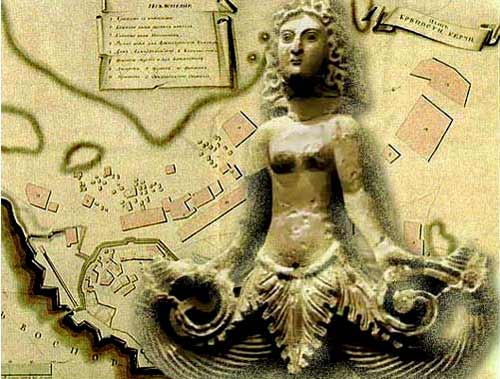
PRESS RELEASE
STATEMENT MADE BY THE CRIMEAN MUSEA
REGARDING THE EXHIBITION “CRIMEA. THE GOLDEN ISLAND IN THE BLACK SEA”
In 2013 four Crimean Musea:
— the Kerch Historical and Cultural Preserve (founded in 1816);
— the Tavrida Central Museum (founded in 1887);
— the Bakhchisaray History and Culture State Preserve of the Republic of Crimea (founded in 1917);
— the National Preserve of Tauric Chersonesos (founded in 1827 and included into the List of World Heritage by UNESCO # 1411)
have sent to Bonn and later to Amsterdam the Exhibition “Crimea. The Golden Island in the Black Sea”, which includes the best items of the unique collections never before on display in Europe. In February 6, 2014 the Exhibition was open at the Allard Pierson Museum (the University of Amsterdam) under the name of Crimea: Gold and Secrets of the Black Sea.

In March 2014 there was a change in the status of the Autonomous Republic of Crimea, which signed the agreement on Crimea’s joining the Russian Federation. Ukraine has not recognized Crimea’s reunification with Russia and considers it to be an occupied territory. The Ministry of Culture of Ukraine has stated that it intends to hamper the return of the Exhibits to the Crimea and to displace them to Kyiv. The Exhibition expired on the 31st of August, and the Allard Pierson Museum took a decision not to return the Exhibits to the Crimean Musea citing the claims by the Ministry of Culture of Ukraine. The Allard Pierson Museum said that it would pass the Exhibits on the basis of the decision made by an authorized court in order to avoid any subsequent claims that may be filed in future by any of the parties.
Thus, the best items of the collections of the Crimean Musea have become hostages to the political situation. Now the question is not who will get the unique collection of antiquities: Russia or Ukraine. The question is whether the archeological findings will return to the place of their origin: to the Crimea. The dispute has been triggered by the intention of the Ministry of Culture of Ukraine to deprive the Crimean Musea of their exhibits displacing them to Kyiv for permanent storage against the will of the Crimean Musea. The Ministry of Culture of Ukraine justifies its claims by its wish to preserve the exhibits, but it cannot present any evidence that there is a real threat of destruction, loss, damage or wreckage of the museum items. Since the change of the Crimea’s political status, none of the museum items of any of 90 Crimean musea has been destroyed or left the territory of the Crimea. The Crimean Musea are convinced that at present there is absolutely no danger to the museum collections in the Crimea.
We understand the position voiced by the Allard Pierson Museum and its apprehension to make the decision given the claims by Ukraine and the political context of the case. But we categorically disagree with the view that such a position can be regarded as lawful and reasonable. The Crimean Musea are legal possessors of the exhibits. The contracts to hold the Exhibition were signed directly between the Crimean Musea and the University of Amsterdam. In compliance with the contract provisions, the items have to be returned to their legal possessors: to the Crimean Musea.
It needs to be stressed that both the Ministry of Foreign Affairs of the Netherlands and the Ministry of Culture of the Russian Federation have made an official statement that this dispute does not belong to a intergovernmental level and should be tackled exclusively at an intermusea level.
The situation when the Crimean Musea have to prove in court their right to the items from their collections found on the Crimean soil, with many of them having being deposited with the Crimean Musea since the 19th century, is truly unprecedented. The subject to a court dispute is archeological heritage of the Crimea as part of its cultural identity. Each item of the collection can trace a thousand years of history of ancient people who had lived in the Crimean Peninsula before Christ: Greeks, Romans, Scythians. The items of the Exhibition have always been kept in the Crimean musea, on the territory where they have been found. Meanwhile, the Crimean Peninsula itself belonged to different states over the last one hundred years: the Russian Empire (1783 – 1917), the Russian Soviet Federative Socialist Republic as part of the USSR (1921 – 1954), the Ukraine Soviet Socialist Republic as part of the USSR (1954-1991), Ukraine (1991-2014).
No matter to what state the Crimean Peninsula has belonged, the Crimean archeological findings have always been safeguarded and studied solely by the Crimean Musea, which are unique research centers employing real experts in the Crimean ancient history. The loss of archeological findings will impoverish the collection. Moreover, it will put hindrances or even will make it impossible to do further research in history and archeology.
The Exhibits include unique archeological artefacts, such as three Chinese lacquer jewel-boxes found in the Us’t-Al’ma necropolis, a painted altar from the burial of the Scythian king Skiluros found in the Mausoleum of the Scythian Neapolis in Simferopol, unique decrees from Chersonesos Taurica, as well as the statue of the serpent-legs Scythian goddess who is a symbol of the city of Kerch and whose monument has been built in the city center of Simferopol. Its loss can only be compared to a loss of Edward Ericsen’s Little Mermaid by Copenhagen or Rembrandt’s Night Watch by Amsterdam. The loss of these exhibits means for us both the loss of items of world importance and the loss of archeological heritage constituting the core of the cultural code of our people.
The Crimean Musea address the world musea and research community, the International Council of Museums (ICOM) and the UNESCO, appealing to them to look into the situation. The peoples of Europe have already survived through losses and displacement of many cultural valuables during the Second World War (WWII). And this bitter pill administered to the European countries made them adopt the international conventions that guarantee the basic principles of protection of cultural valuables, that is, the principle of preservation of cultural heritage in the country of origin (on the territory that is most closely connected with the cultural valuables), the principle of unity of musea collections, immunity of cultural valuables, the neutrality of the musea and the respect of their rights.
The blocking of the collection by the Allard Pierson Museum and the proposal to settle the dispute by court creates a very dangerous precedent and cast doubts over the supremacy of international law with regards to the protection of cultural valuables. We understand that the current political situation and global public opinion with regards to the events that took place in Crimea in March 2014 create a negative background for settling the issue of the
Exhibits’ return to their motherland. Any political conflicts will be settled eventually, while pegging the fate of cultural archeological heritage of the Crimean Peninsula to the short-lived or transitory political interests is hugely detrimental. We are firmly convinced that the tragic history of the cultural values’ displacement in the middle of the 20th century must not be repeated in the 21st century, and even in theory we cannot allow a people to be deprived of their cultural heritage.
Starting from May 2014 our lawyers have been involved in negotiations with the lawyers of the Amsterdam University. At present the claim by the Crimean Musea requesting the Exhibits’ return to their motherland has been prepared and can be filed at any moment. But the Crimean Musea voice a hope that the issue can be resolved yet through negotiations without initiating court litigations. If the case is decided by court, we will do our best to protect our legal rights and interests, to preserve the unity of musea collection and to guarantee the right of the Crimea peoples to their cultural archeological heritage. We are convinced that both law and supreme justice are on the side of the Crimean Musea, as life is short and art is eternal: vita brevis, ars longa.
Sincerely yours,
the Bakhchisaray History and Culture State Preserve of the Republic of Crimea
the Kerch Historical and Cultural Preserve
the National Preserve of Tauric Chersonesos
the Tavrida Central Museum
From kerch-museum.com

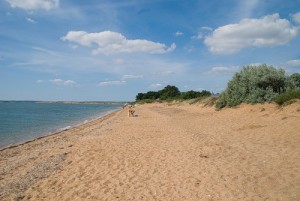
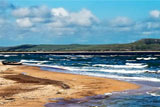
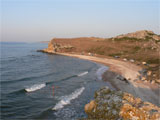
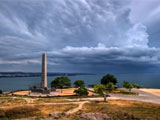

Warning: count(): Parameter must be an array or an object that implements Countable in /var/www/u1372913/data/www/pantikapei.ru/wp-includes/class-wp-comment-query.php on line 405